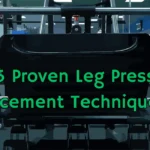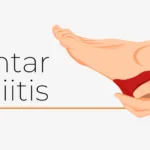Introduction
If you’re looking to target your trapezius muscles, also known as the traps, with a bodyweight back exercise, you may be wondering: do pull-ups work the traps? Pull-ups are one of the best compound back exercises you can do to hit multiple upper-body muscle groups at once. But it’s a common question whether they effectively target the trapezius muscles across the upper back and neck specifically.
In this comprehensive guide, we’ll break down the muscle anatomy of what traps do, dig into Do Pull Ups Work Trapezius, look at the trap activation in pull-ups versus other vertical pulling moves, review which pull-up variations best target the trapezius, and give you actionable tips to get the most trap work in your next pull up workout.
Do read the People Also Ask (FAQs) about this topic.
Key Takeaway
| Key Question | Answer Summary |
|---|---|
| What is the role of the trapezius (traps) muscles? | Large upper back/neck muscle group assisting with scapular movement, neck extension, head side-to-side motion, and raising shoulders in a shrug. |
| Do pull-ups activate the traps based on EMG research? | Yes, high 75-85% MVC upper trap activation. Moderate middle (45-60%) and lower (35%) trap activation. |
| How does trap activation compare between pull-ups vs. chin-ups and lat pulldowns? | Pull-ups elicit the highest overall trap activation of these vertical pull variations. A Wider grip enhances upper trap work. |
| Which pull-up form tweaks better target specific trap fibres? | Wider overhand grip for upper traps. Underhand/neutral grip hits lower traps more. Behind the neck also works mid-traps. |
| What are some weighted pull-up variations that can build bigger traps? | Weighted wide-grip overhand pull-ups, weighted ring pull-ups, weighted inverted rows. |
| What are tips to optimize pull-ups for trap development? | Warm up properly, use full ROM, control form, prioritize quality over quantity reps, and allow for adequate recovery between sessions. |
| Bottom Line: Do pull-ups work the traps effectively? | YES – Pull-ups thoroughly activate the upper, middle and lower traps as a tremendous vertical pull exercise. Approx. 75% max trap activation. |
What Do the Trapezius Muscles Do?
Before analyzing pull-ups for the traps, it helps to understand the role of the trapezius group. These triangular muscles cover a large portion of the upper back as well as the neck. The trapezius assists with important functions including:
- Scapular (shoulder blade) movement and stabilization
- Neck extension and lateral flexion
- Head movement side to side or nodding up and down
- Raising the shoulders towards the ears in a shrug
There are three sections of the trapezius— upper, middle, and lower. The upper traps connect the neck to the collarbones and shoulder blades. When strengthened, they can improve neck and shoulder posture. The middle traps stabilize the shoulder blades and assist with retraction. The lower traps work with other back muscles like the rhomboids and lats in downward rotation motions.
Overall, balanced trapezius development improves shoulder health and function for athletic performance or daily life. Exercises that target different sections of this muscle group are important to include in a regimen. Now let’s analyze whether pull-ups adequately work the traps.
Muscle Activation: Do Pull Ups Work Trapezius?
Pull-ups involve gripping an overhead bar with hands slightly wider than shoulder-width apart, and arms extended. You pull your chest towards the bar by retracting the shoulder blades down and back, then return to the start slowly with control. This compound move utilizes muscles in both the upper and lower arms along with the upper back and core for stabilization.
The two main prime mover muscle groups trained in pull-ups are the lats (latissimus dorsi) and biceps. However, studies show pull-ups elicit significant secondary trap activation as a stabilizer muscle. This makes sense given their connection to the scapula for shoulder girdle movement. Based on electromyography (EMG) research, here’s how to trap activation with pull-ups compares:
- Upper traps – High activity at 75-85% maximum voluntary contraction (MVC)
- Middle traps – Moderate activity at 45-60% MVC
- Lower traps – Lower activity approximately 35% MVC
So while not quite at the level of direct trap exercises like barbell shrugs or upright rows, pull-ups do hit the traps decently, especially the upper fibres. Proper form ensuring full shoulder retraction at the top further enhances trapezius engagement. This explains why gymnasts and swimmers tend to have impressively built upper traps from all the pulling work.
So in summary – yes, pull-ups thoroughly work the traps! Now get to that pull-up bar and start reaping all the upper back and trap rewards these offers through a variety of grip and loading protocols.
Now the question is how trap activation with pull-ups compares to other vertical pull exercises. Are pull-ups or chin-ups better for traps? What about lat pulldowns – do those work traps more?
Pull Ups vs. Chin Ups vs. Lat Pulldowns for Traps
The main alternatives to pull-ups targeting similar upper body pulling muscles are chin-ups along with machine-based lat pulldowns. Here’s how these exercises stack up for traps:
Pull Ups vs. Chin Ups
Both pull-ups and chin-ups involve the same vertical pulling movement at different grip positions. Pull-ups use a wide overhand grip while chin-ups utilize a closer, underhand grip with palms facing you. Which works traps better?
Due to the wider hand positioning, pull-ups enhance scapular retraction at the top by bringing the shoulder blades closer together. This leads to slightly greater upper trap activation over chin-ups. Chin-ups do allow you to handle more body weight though, as suggested by strength levels being about 10-15% higher. So if going heavier and doing more volume, the extra workload could offset slightly lower trap usage. But in general, pull-ups have a small edge for traps over chin-ups or parallel grip variations.
Pull Ups vs. Lat Pulldowns
Lat pulldowns are a popular choice to mimic the vertical pull of chin-ups or pull-ups using a machine rather than a bodyweight load. Like pull-ups, lat pulldowns engage the lats as the primary target along with biceps and traps assisting. Can cable lat pulldowns build bigger, stronger traps than bodyweight pull-ups?
Research again shows some differences in muscle activation comparing these vertical pulling staples:
- Pull-ups produce higher upper and lower trap activation over machine pulldowns.
- Lat pulldowns better isolate the lats as the prime movers.
- Certain grip positions on lat pulldowns can further target different trap fibres.
So while lat pulldowns are an effective back exercise, pull-ups appear superior for fully working the traps, likely due to increased demand on shoulder stability. Plus, the core has to work harder stabilizing the body during free-hanging pull-ups versus being seated.
Best Pull-Up Variations to Target the Trapezius
Standard pull-ups with a wide overhand grip hit the traps well a major benefit of this exercise. But depending on your specific goals, you can tweak certain pull-up form factors to further home in on the upper, middle, or lower trap fibres:
- Wider overhand grip – Great for upper traps due to increased shoulder retraction.
- Underhand/neutral grip – Targets lower traps more with shoulder depression.
- Behind the neck – Enhances middle trap activation but can strain the shoulders.
- Wide grip pronated (palms away) – Combining overhand wide grip with lean back hits more traps.
Advanced athletes can also train pull-up variations using resistance bands or added weight to boost trap muscle activation for hypertrophy. Some top weighted choices:
- Weighted Wide Grip Overhand Pull Ups – Adds resistance for the upper traps.
- Weighted ring pull-ups – Increase demand on stabilizers including traps.
- Weighted Inverted Rows – Allows focus on scap retraction targeting traps.
Just be cautious about going too heavy and too fast on any weighted pull-up variations if newer to training. Progress gradually based on your current strength and movement competency.
Actionable Tips: Optimize Your Pull-Ups for Building the Traps
If bigger, stronger traps are a goal through callisthenics, use these tips for maximizing results from your pull-up workouts:
- Warm up properly – Start training sessions by foam rolling and activating the upper back and shoulders to prepare the traps for work.
- Use a full range of motion – Initiate each rep from a dead hang pulling until your collarbone touches or clears the pull-up bar at the top for full shoulder blade retraction.
- Focus on form and control – Move smoothly without excessive momentum or jerking actions that can strain the neck and shoulders. Take 2-3 seconds for the concentric and eccentric phases.
- Prioritize quality over quantity – The traps respond better to moderately heavy loads lifting a challenging weight for lower reps versus sloppy high rep pump sets failing to adequately retract the shoulder blades at the top. Stay between the 3-8 rep range per set.
- Allow for adequate recovery – Pull-ups and vertical pulls should not be trained daily. Take at least 48 hours between directly working the traps again through intense pulling exercises for muscular repair.
Conclusion
After analyzing the muscle activation research and exercise comparisons, the answer is a resounding yes – pull-ups thoroughly work the upper, middle, and lower sections of the trapezius muscles as a tremendously productive compound upper body vertical pull.
While maybe not quite as much as direct trap isolation moves like barbell shrugs, pull-ups elicit impressive overall trapezius muscle usage thanks to the dynamic shoulder girdle retraction required. They strongly activate the upper and middle traps at around 75% max capacity as important scapular stabilizers. Lower trap work suits other pull-up grips.
So incorporating a mix of pronated grip pull-up variations into your regimen combined with adequate recovery builds bigger, stronger traps over time. The tips above outline how to maximize results by activating all trap fibres.
Just avoid relying only on excessively high rep pump sets alone. Lift challenging weights in the 5-8 rep range focusing on full range of motion and contraction. Pull up with control.
If trap hypertrophy and shoulder health are goals, pull-ups deserve a spot in your training routine. Their multi-dimensional vertical pulling action thoroughly trains the trapezius for posture and performance benefits in fitness, sports, or daily life.
People Also Ask (FAQs)
Here are the FAQ questions and answers about pull-ups for traps.
Q) Can you work traps on a pull-up bar?
A) Yes, pull-ups and chin-ups done on a bar are excellent exercises for working the trapezius (trap) muscles in the upper back and neck due to the shoulder retraction required. Different grip widths hit different sections of the traps.
Q) What exercise strengthens the trapezius traps?
A) The most direct trap exercise is shoulder shrugs, but pull-ups/chin-ups, upright rows, and farmer’s walks also build trap strength and size well through shoulder involvement.
Q) Why are my traps sore from pull-ups?
A) It’s common for the traps to get sore after doing pull-ups since they assist the shoulder blades in stabilization, contraction, and movement during this exercise. Sign of a good trap workout!
Q) Do push ups work trapezius?
A) Push-ups focus more on the chest, shoulders and triceps. They don’t directly hit traps much since those muscles are worked in pulling motions instead of pushes.
Q) What part of traps do pullups work?
A) Pull-ups hit the upper and middle trap fibres the most. Grip position alters emphasis – wide overhand pull-ups for upper traps, neutral grip for lower traps.
Q) How do you activate traps with pull-ups?
A) Focus on fully retracting the shoulder blades at the top by bringing them down and back. The wider the hand position, the greater the squeeze and trap activation.
Q) Why are my traps so big?
A) Genetics plays a role, but large, defined traps are also built through intense pulling exercises over time. Weighted pull-ups and deadlifts grow thicker traps.
Q) Why won’t my traps grow?
A) If your traps are lagging, add direct trap work like shrugs. Ensure nutrition supports growth. Allow full recovery between trap sessions. Use good form through the pull’s full range of motion.
Q) Are traps push or pull?
A) Traps assist in shoulder girdle motions so they are worked in pulling exercises (pull-ups, rows). Pushes don’t activate them much.
Q) How do shrugs on the pull-up bar?
A) Grasp the bar with shoulders dropped then powerfully raise them towards ears, squeezing traps. Lower with control. Can add weight for progressive overload.
Q) Can you work shoulders on a pull-up bar?
A) Yes, pull-ups and chin-ups done on a bar effectively train the shoulder muscles in addition to the back, biceps and traps. Play with grip.
Q) Do you train traps on push or pull?
A) Traps are involved in shoulder retraction so train them on pull days, not push days. Pull-ups, barbell rows etc work traps.
Q) Should traps be on pull or push day?
A) Work traps on pull day. Pulling exercises like pull-ups, upright rows, and shrugs all activate the traps so pair them with back/biceps.












